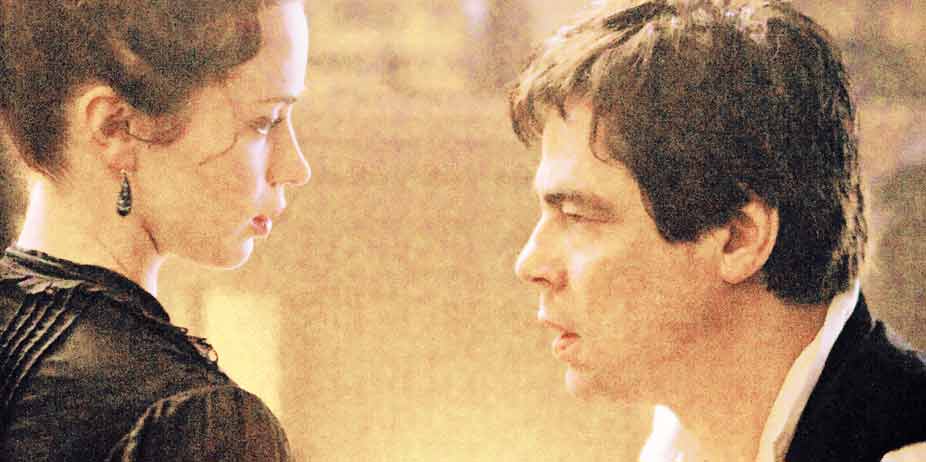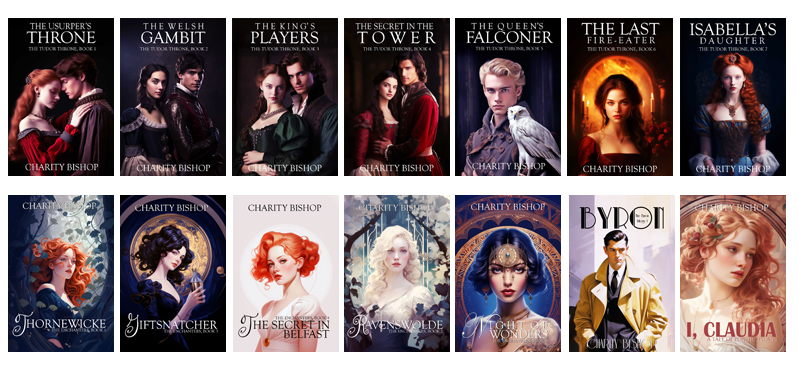 The
Wolfman (2010)
The
Wolfman (2010)
During the Victorian era, interest in "monster" stories increased tenfold, with a renewed interest in the supernatural. It is fitting therefore that The Wolfman should be set in the picturesque era of bustles, ribbon-drenched bonnets, and horse drawn carriages.
Something stalks the countryside of Blackmore in the wilds of the English countryside, and has been murdering the locals during the full moon. Two men have been brutally killed and a third has gone missing. Laurence Talbot (Benicio Del Toro) knows nothing of it until his brother's fiancee turns up at one of his London theatrical performances and informs him that it has been a month since his brother Ben was seen. She pleads with him to come home and with reluctance, Laurence boards a train and travels back to his childhood -- and the household of his domineering, emotionally distant and sinister father, Sir John (Anthony Hopkins). His arrival coincides with the discovery of his brother's body in a ditch -- he is just in time for the funeral. Everyone wants to dismiss it as an animal attack or the work of a madman, but the locals have more outlandish notions to share, namely that it is the work of an unholy creature who is part human and part wolf.
Against his father's advise to leave the investigation to Inspector Abberline (Hugo Weaving) of Scotland Yard, Laurence travels out into the night to ask the wandering gypsies what is known of his brother's death. But when a violent, vicious creature attacks the encampment, his own life is nearly lost and he has been bitten on the shoulder. This incident and those which follow will have serious consequences for Laurence, as well as threaten his affectionate interest in beautiful young Gwen (Emily Blunt). When this film came out it was immediately written off as rubbish, so renting it I did not have high expectations. Imagine therefore my surprise to find out it is actually quite a well-rounded film. Its strongest attribute comes from the exquisite costume and set design. We are immersed in authentic, eerie Victorian England with fog-swept courtyards, sinister crypts, and dark corridors. The attention paid to detail both for their surroundings (in many cases, choosing some truly beautiful backdrops) and in the perfection of the costuming is stunning. I have not seen a movie this beautiful and atmospheric since Sleepy Hollow. It also has a marvelous cast. Admittedly, I suspected Del Toro would be all wrong for the role but he really shows off his acting capabilities here -- and has no trace of his usual heavy accent. He has an interesting quality of being frightening even in human form, which adds an element of tension to his scenes with Gwen. Of course, inevitably the finest character here is the psychological layers Anthony Hopkins gives to his performance, pandering between sinister and strangely alluring in most of his scenes.
There are two different versions of this film out and the Director's Cut is the best, as it has added an additional sixteen minutes to the running length, most of which is made up in the early scenes, establishing characters and adding additional dialogue and interaction. I suspect the inferiority of the original is one of the reasons it was not well received. Unfortunately, lengthening it does add a handful of minor continuity issues (in one instance, a letter is referenced rather than an in person visit, the most major change from the theatrical version). If I had one complaint about the artistry and pacing of the film, it would be that one vicious battle between Wolfmen toward the end of the film feels anti-climatic somehow, but the scenes immediately following it are far superior. The Wolfmen themselves are also styled intentionally after the original representation of them on screen, which means at times their forms are campy rather than terrifying. The early scenes before we see much of them are actually far more frightening than later shots of the actors in full costume.
The undercurrent is one of faith conflicting with science, as the atheistic experts find themselves confronted with something they cannot explain, while those who are more superstitious and in many cases religious (such as the townspeople and local parish priest) immediately sense the presence of evil and condemn it as the work of the devil. The film does not paint this transformation as anything other than a medical condition but the gypsies rely on talismans to keep them safe (it does not work). The film's exploration of evil is at times a bit heavy-handed, promoting the question, "Is there a beast inside all of us?" but at the same time thought-provoking. I also thought the inclusion of Abberline
of Jack the Ripper fame was quite clever. It's a shame
there's so much gruesomeness to wander through, because
minus that it is an entertaining and picturesque romp
into a Victorian horror story.
Sexual Content: Other:
While there is no sexual content, a woman is shown
undressed from the waist up in a shot that includes her bare
back and part of her side. We see a drawing of a naked woman
in an old book.
Language:
Profanity is almost nonexistent, but there are a handful of abuses of deity (including one of GD).
Violence:
One downside to this production is the sheer amount of gore involved. It's a bloody story and the director pushes his R-rating to the limit. The decapitations of unfortunate townsfolk are depicted on screen, in one instance with a prolonged shot of a gasping, biting head as blood runs out of its neck. Fingers, arms, and legs are victim to ravenous jaws. Wolfmen slice and dice their way through bystanders, tear out internal organs with their teeth, skewer people through the head and chest, and spatter blood in all directions, leaving the surrounding ground strewn with remains. Partially eaten corpses are shown on many occasions, exposing bone and gristle. Individuals are set on fire and burned alive, thrown out of windows (one is impaled on a wrought iron fence), and run over by carriages. A patient is subjected to inhumane, arcane treatments in an asylum, which includes dunking him completely in a water tank filled with ice. Needles are shown penetrating a man's skin multiple times. Two Wolfmen engage in a violent fight and do their best to tear one another apart before one is victorious. The transformation from human to beast is particularly unsettling and looks extremely painful -- bones stench, joints dislocate, and blood pours. We see two different memories of the past and a woman's death -- one implies she has cut her throat, another that she is being killed by a werewolf. A woman is forced to shoot someone to save herself; elsewhere, a man entangles with the creature and miraculously survives.
